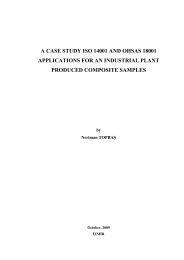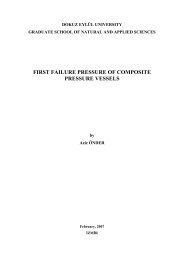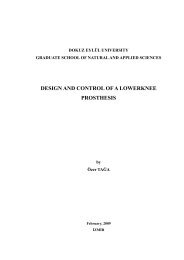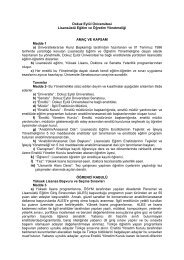A numerical study on the thermal expansion coefficients of fiber
A numerical study on the thermal expansion coefficients of fiber
A numerical study on the thermal expansion coefficients of fiber
Create successful ePaper yourself
Turn your PDF publications into a flip-book with our unique Google optimized e-Paper software.
37<br />
The area covered by a strain gauge is usually quite small, 1-5 mm, and this means<br />
that it samples <strong>the</strong> local behavior ra<strong>the</strong>r than <strong>the</strong> l<strong>on</strong>ger range average. In composites<br />
which have homogeneous reinforcement, such as flat laminates, unidirecti<strong>on</strong>al<br />
reinforcements and particulate composites, <strong>the</strong> technique can be used reliably, but<br />
cauti<strong>on</strong> needs to be exercised with woven structures. The active part <strong>of</strong> <strong>the</strong> strain<br />
gauge needs to cover several representative reinforcement units for <strong>the</strong> results to be<br />
representative <strong>of</strong> bulk material behavior.<br />
3.4 Theoretical C<strong>on</strong>siderati<strong>on</strong><br />
Micromechanics is a <str<strong>on</strong>g>study</str<strong>on</strong>g> <strong>of</strong> mechanical properties <strong>of</strong> composites in terms <strong>of</strong><br />
those <strong>of</strong> c<strong>on</strong>stituent materials (Tsai, & Hahn 1980). In discussing composite<br />
properties it is important to define a volume element which is small enough to show<br />
<strong>the</strong> microscopic structural details, yet large enough to represent <strong>the</strong> overall behavior<br />
<strong>of</strong> <strong>the</strong> composite. Such a volume element is called <strong>the</strong> representative volume<br />
element. A simple representative volume element can c<strong>on</strong>sist <strong>of</strong> a <strong>fiber</strong> embedded in<br />
matrix block.<br />
Once a representative volume element is chosen, proper boundary c<strong>on</strong>diti<strong>on</strong>s are<br />
prescribed. Ideally, <strong>the</strong>se boundary c<strong>on</strong>diti<strong>on</strong>s must represent <strong>the</strong> in situ states <strong>of</strong><br />
stress and strain within <strong>the</strong> composite. That is, <strong>the</strong> prescribed boundary c<strong>on</strong>diti<strong>on</strong>s<br />
must be <strong>the</strong> same as those if <strong>the</strong> representative volume element were actually in <strong>the</strong><br />
composite.<br />
Finally, a predicti<strong>on</strong> <strong>of</strong> composite properties follows from <strong>the</strong> soluti<strong>on</strong> <strong>of</strong> <strong>the</strong><br />
forgoing boundary value problem. Although <strong>the</strong> procedure involved is c<strong>on</strong>ceptually<br />
simple, <strong>the</strong> actual soluti<strong>on</strong> is ra<strong>the</strong>r difficult. C<strong>on</strong>sequently, many assumpti<strong>on</strong>s and<br />
approximati<strong>on</strong>s have been introduced, and <strong>the</strong>refore, various soluti<strong>on</strong>s are available.<br />
General assumpti<strong>on</strong>s in micromechanics <strong>of</strong> composites are:

















